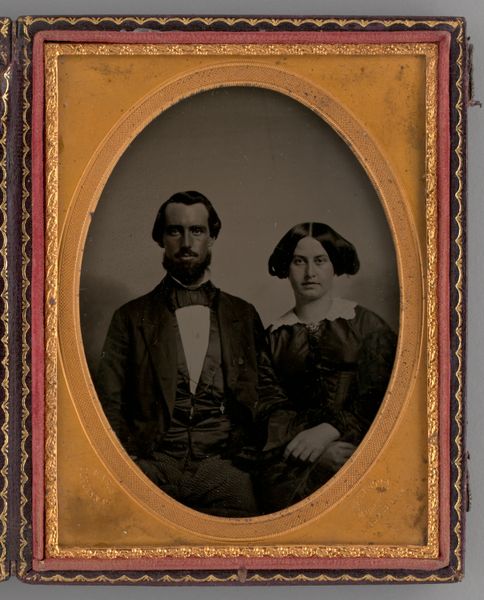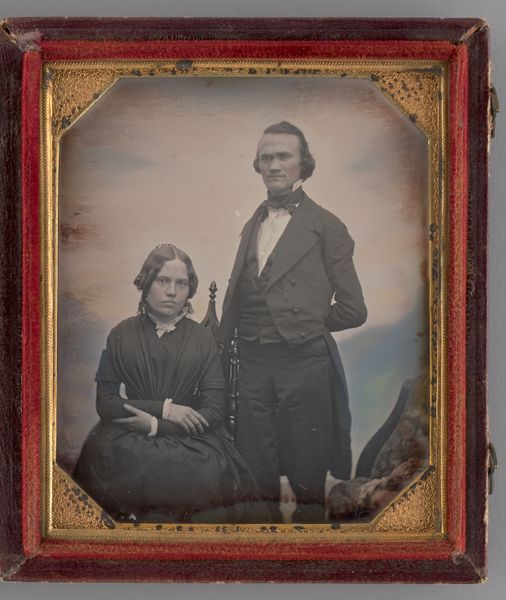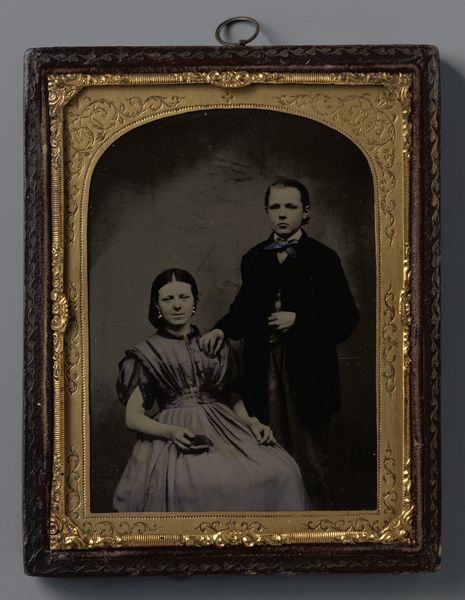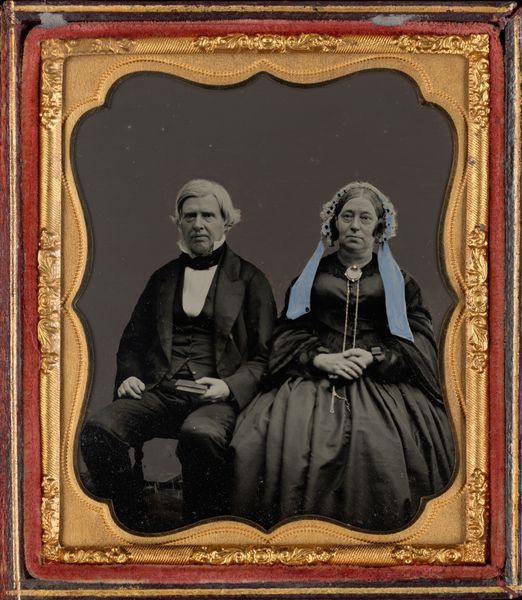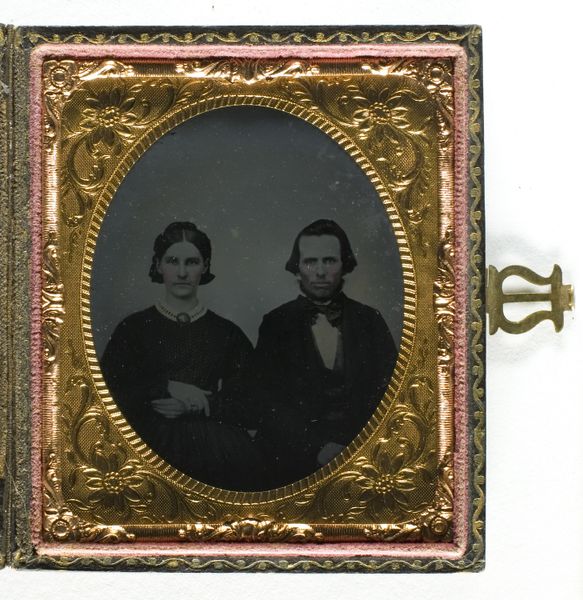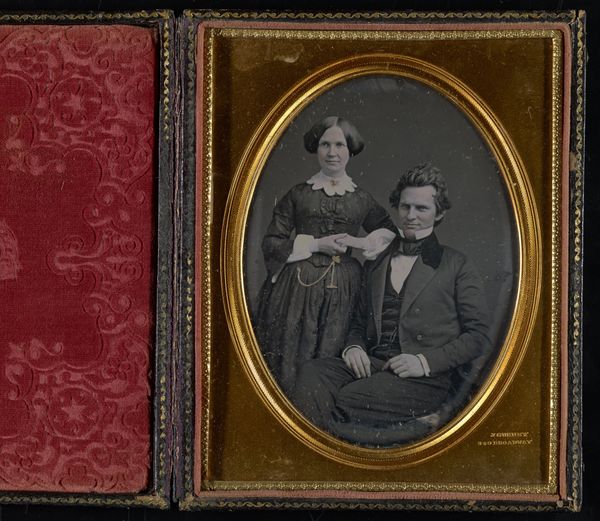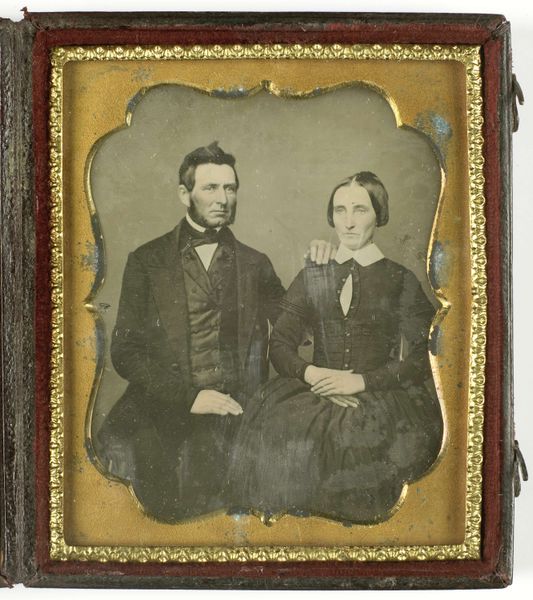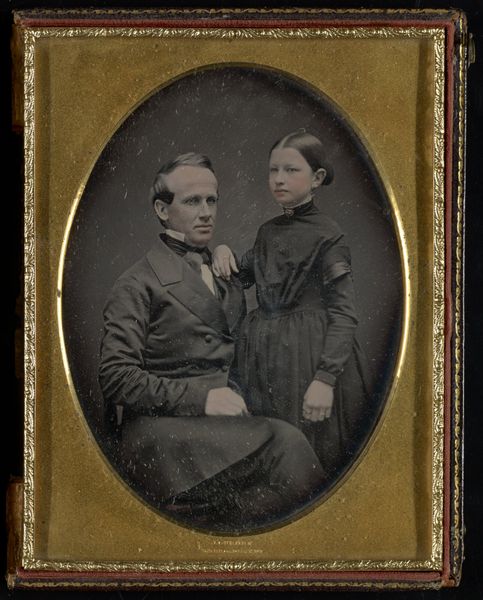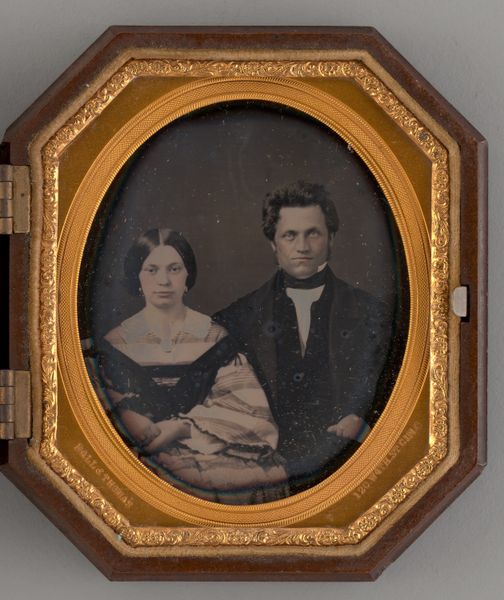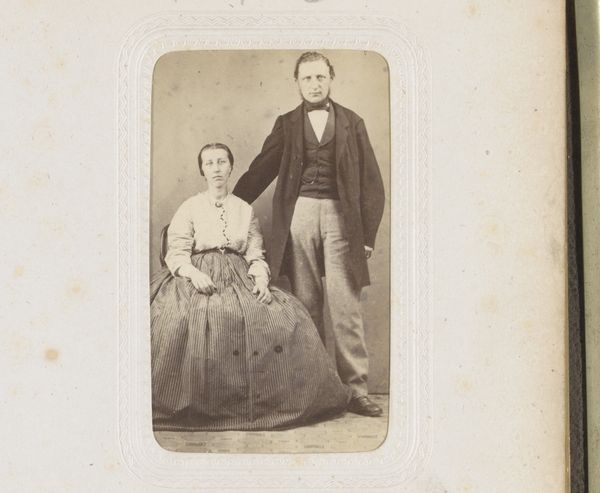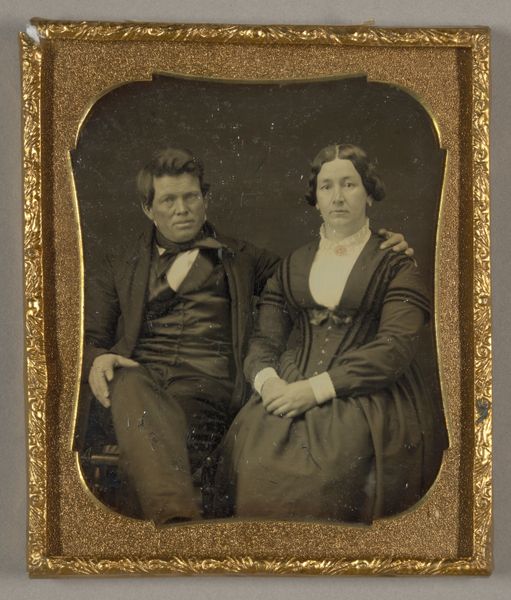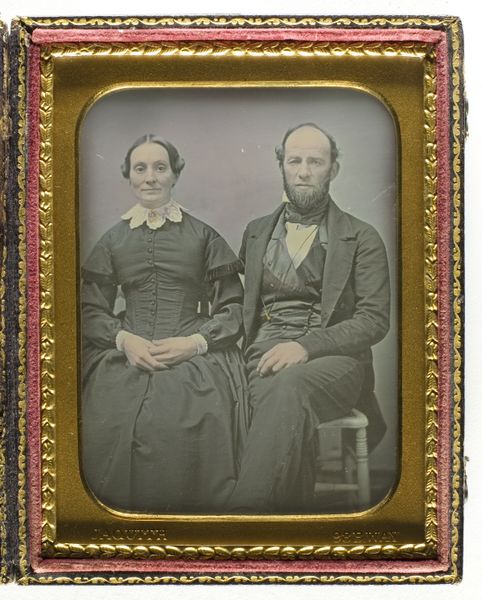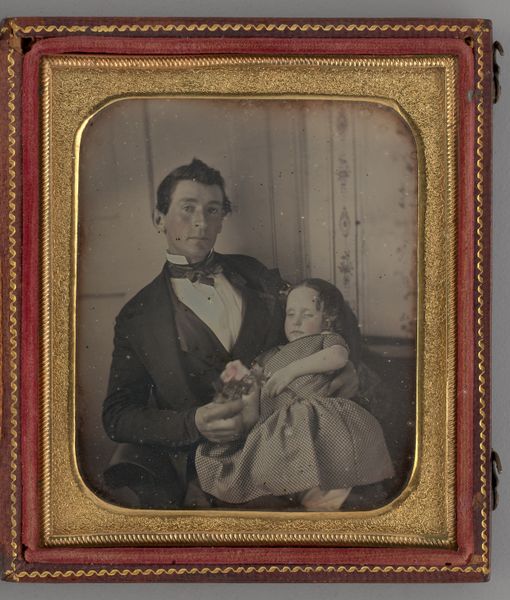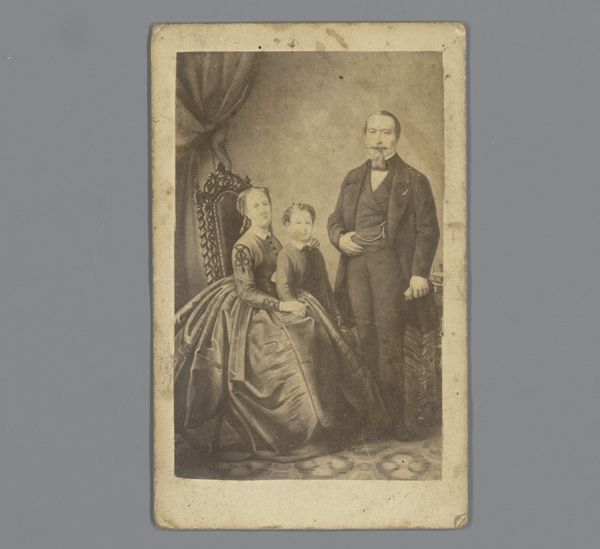![Untitled [portrait of an elegantly attired man and woman] by Jeremiah Gurney](/_next/image?url=https%3A%2F%2Fd2w8kbdekdi1gv.cloudfront.net%2FeyJidWNrZXQiOiAiYXJ0ZXJhLWltYWdlcy1idWNrZXQiLCAia2V5IjogImFydHdvcmtzLzQ1Y2E1ODQ0LWM3MjEtNGU5Mi04N2M1LTEzZTBiMjdjMGJkYi80NWNhNTg0NC1jNzIxLTRlOTItODdjNS0xM2UwYjI3YzBiZGJfZnVsbC5qcGciLCAiZWRpdHMiOiB7InJlc2l6ZSI6IHsid2lkdGgiOiAxOTIwLCAiaGVpZ2h0IjogMTkyMCwgImZpdCI6ICJpbnNpZGUifX19&w=3840&q=75)
Untitled [portrait of an elegantly attired man and woman] 1852 - 1858
0:00
0:00
daguerreotype, photography
#
portrait
#
daguerreotype
#
photography
#
united-states
#
genre-painting
#
realism
Dimensions: 7 1/4 x 6 in. (18.42 x 15.24 cm) (image)7 3/4 x 6 1/2 x 7/8 in. (19.69 x 16.51 x 2.22 cm) (mount)
Copyright: Public Domain
This is an early photograph of a formally dressed couple, made by Jeremiah Gurney in the United States, around the middle of the 19th century. The image speaks to the rise of photography as a powerful tool for social representation. Gurney was one of the leading photographers in New York, catering to a clientele eager to participate in this new form of portraiture. The daguerreotype process allowed for detailed, if somewhat stiff, likenesses, a departure from the painted portraits previously reserved for the wealthy. Notice the careful attention to clothing and pose, reflecting the aspirations and social standing of the sitters. The man's confident posture and the woman's demure gaze reinforce prevailing gender roles of the period. Understanding this image requires considering the social and economic context that enabled the growth of photography studios. Census records, business directories, and photographic journals can provide insight into the lives of both the photographers and their subjects. This portrait then becomes a window into the values and self-perceptions of a burgeoning middle class in the 19th century.
Comments
minneapolisinstituteofart about 2 years ago
⋮
Invented by the Frenchman Louis-Jaques-Mandé Daguerre in 1839, daguerreotypes were one of the earliest photographic processes. A daguerreotype is a silver-coated copper plate that is developed by mercury vapors after exposure of several seconds to light in the camera. The somewhat stiff facial expression of the sitter may be due to the long exposure. Often sitters were supported by a special stand to keep their heads still and prevent a blurry image. Daguerreotypes are typically highly detailed with a reflective surface. Each one is unique because there is no negative as with film processes, and they were used almost exclusively for portraiture. To highlight their subject’s individual character and presence, Jeremiah Gurney and other daguerreotype photographers meticulously framed their photographs much like other intimate portrait forms of the day, such as painted miniatures, carved cameos, or silhouettes.
Join the conversation
Join millions of artists and users on Artera today and experience the ultimate creative platform.
